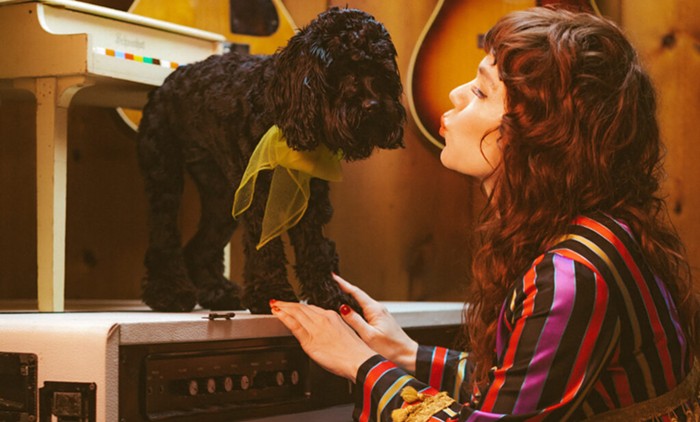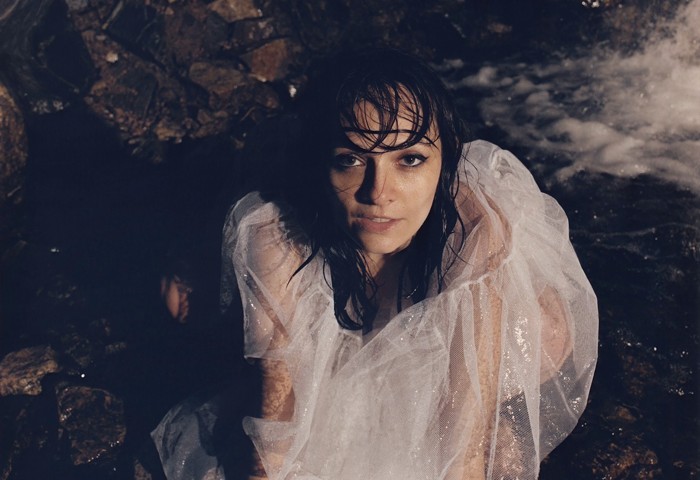Let's go back to the mid-1980s and briefly examine a point called black elegance (BE), where two pop streams meet and pool. The source of the first stream is the disco band Chic. The second is the funk band Time. From Time, we get Jimmy Jam and Terry Lewis. From Jam and Lewis, we get the SOS Band. In 1983, the SOS Band releases the album Rise. It contains the hit single, "Tell Me If You Still Care." The video for that tune, with its signature Roland 808 beat, captures the essence of black elegance, a mode and look inaugurated by Chic's “Good Times."
In the tune's video, the SOS Band flies through the clouds in a blimp. Far down below are the too painful post-industrial, post-white-flight, post-Watts, post-Treaty-of-Detroit, post-New-York-Drop-Dead, post-black-metropolis realities/blues of the ’hoods. Up in the blimp are the transitory pleasures of courtship, pop music, cocktails, and, of course, designer clothes.
To this day, Jimmy Jam and Terry Lewis have not broken with a look (black elegance) partly initiated by Time, whose lead singer, Morris Day, is Prince's arch-rival in Purple Rain. Though BE was connected with Time, and though it was based in Prince's hometown of Minneapolis, the artist never participates in the moment, which on principle never blurs the line between male and female roles. The women in BE aspire to be ladies, and the men aspire to be gentlemen. BE's sex codes are stable.
Prince, as the great culture theorist Steven Shaviro has pointed out, is not stable; he is not altogether black or altogether white, nor altogether a woman or altogether a man. Prince is mixed and androgynous, and his look and music constantly disturbs clear codes, clear roles, clear borders. With "If I Was Your Girlfriend," Prince becomes a mist of the sexes.
"If I Was Your Girlfriend" did to my erotic imagination what the sudden explosion of flowers did to the earth millions of years ago—in a short period near the end of the age of the big reptiles, our monochromatic planet became a confusion of color. This is how Loren Eiseley described the transformation:
If our whole lives had not been spent in the midst of it, it would astound us. The old, stiff, sky-reaching wooden world changed into something that glowed here and there with strange colors, put out queer, unheard of fruits and little intricately carved seed cases, and, most important of all, produced concentrated foods in a way that the land had never seen before, or dreamed of back in the fish-eating, leaf-crunching days of the dinosaurs.
Before "If I Was Your Girlfriend," my sexual imagination was monochromatic; afterward, it was full of color. Listening to the song for the first time in 1987—the year black elegance went into decline and its key rival, hiphop, ascended—I realized that sex was more (if not all) about play, rather than function, purpose, distinctions. Indeed, the first album I ever bought, Prince, was already sexually destabilizing. It's back cover featured a nearly naked Prince on a white horse with wings. And the album's hit, "I Wanna Be Your Lover," threw sexual desire into a mist that did not exclude incestuous feelings ("I wanna be your brother / I wanna be your mother and your sister, too"). I was 10 when I bought this record.
The UK's most florid pop critic, Ian Penman, wrote this about Prince in the London Review of Books:
How did he get away with some of this stuff? Controversy came with a full-colour fold-out poster of Prince posing two-thirds naked in the shower. The water drip-drops from his zig-zag briefs; behind him, discreetly positioned on the bathroom wall, is a crucifix. On the sleeve of 1999 (1982) he reclines naked like a Playboy centrefold, in a neon-dappled boudoir. (His hobbies include horse riding, watercolours and pop eschatology ...) On the sleeve of Dirty Mind he wears little more than a jacket, those briefs again, and a street hustler’s determinedly blank gaze; a tiny black and white badge on his lapel says ‘Rude Boy’.
And then there was his music, which was for sure rooted in the black American tradition, but it also broke with it. Even to this day, I can't accurately label "Controversy," or "Dirty Mind," or even "Erotic City," which, in my opinion (or "purple life"), is second only to his highest achievement, "Pop Life." The purple little freak also penned "Manic Monday," a very white/suburban tune. He also crossed the pond and wrote and produced Kate Bush's under-appreciated "Why Should I Love You." With this work, two wondrous pop stars were so close that they exchanged star-stuff.
Black elegance did not survive the last decade of the 20th Century, which really ended in 1989. By 1987, the movement was no longer floating above the realities of the street (the crack epidemic, AIDS, high unemployment). It was now on "the ring of Saturn," which had become "a balcony on which [its] inhabitants take an evening stroll." Indeed, BE's only economic statement, Gwen Guthrie's "Ain’t Nothin’ Goin’ on but the Rent," was, to say the least, stark: "No romance without finance" (1986). Hiphop rejected all of this, and by 1989 it was calling for people to "fight the power" or "fuck the police."
There was no political potential at all in BE. But there was in Prince's world. It is no accident that one of the most powerful political pop tunes of the 1980s was "Sign o' the Times": "When a rocket blows and, and everybody still wants to fly / Some say man ain't happy truly until a man truly dies / Oh why, oh why?"
Seattle producer and genius Vitamin D will contribute to the Prince tribute at the Royal Room on Saturday, Jun 11.




















